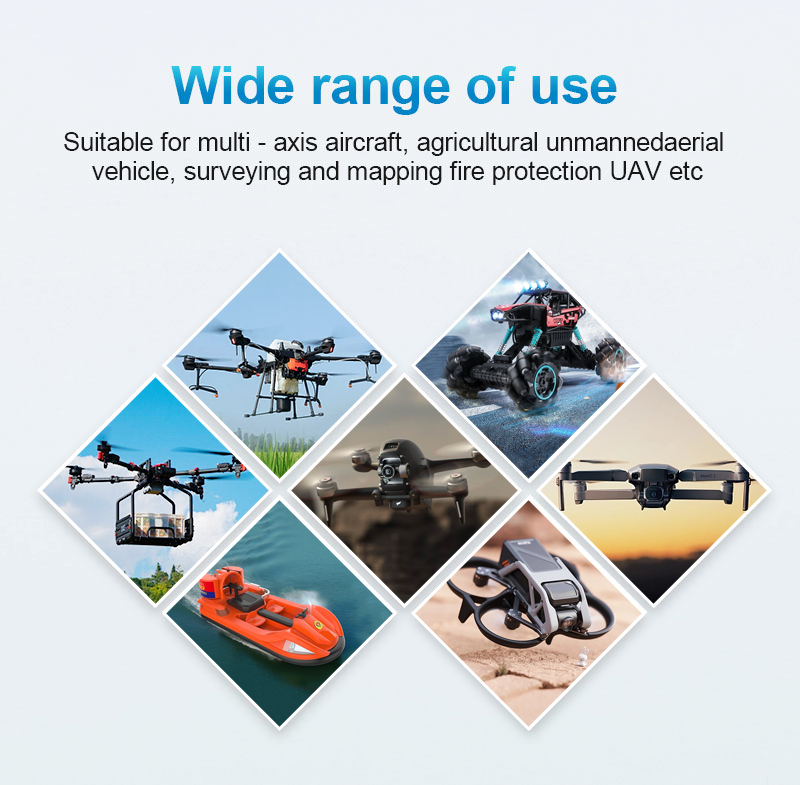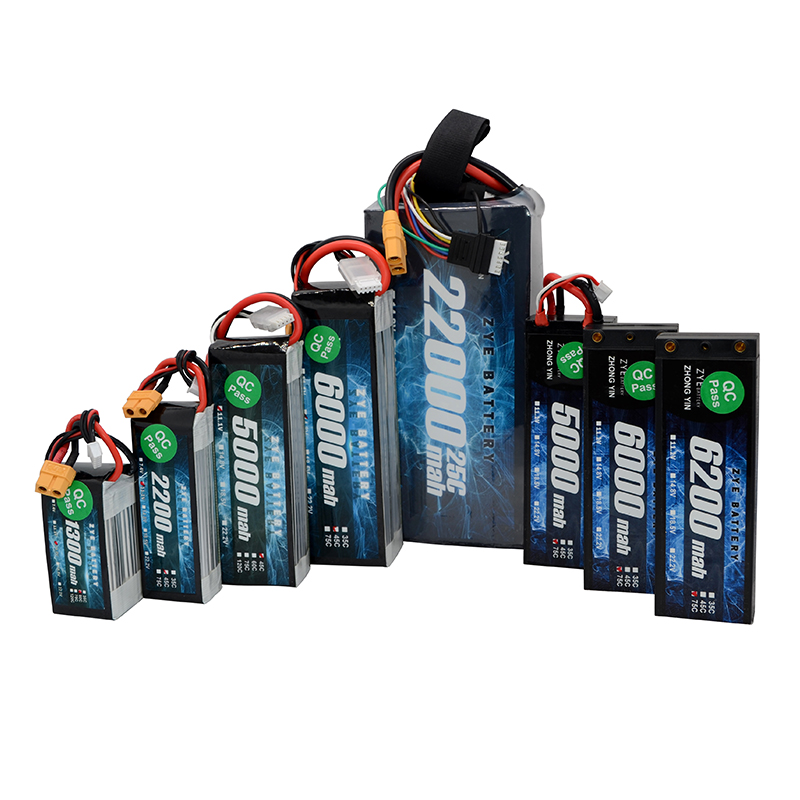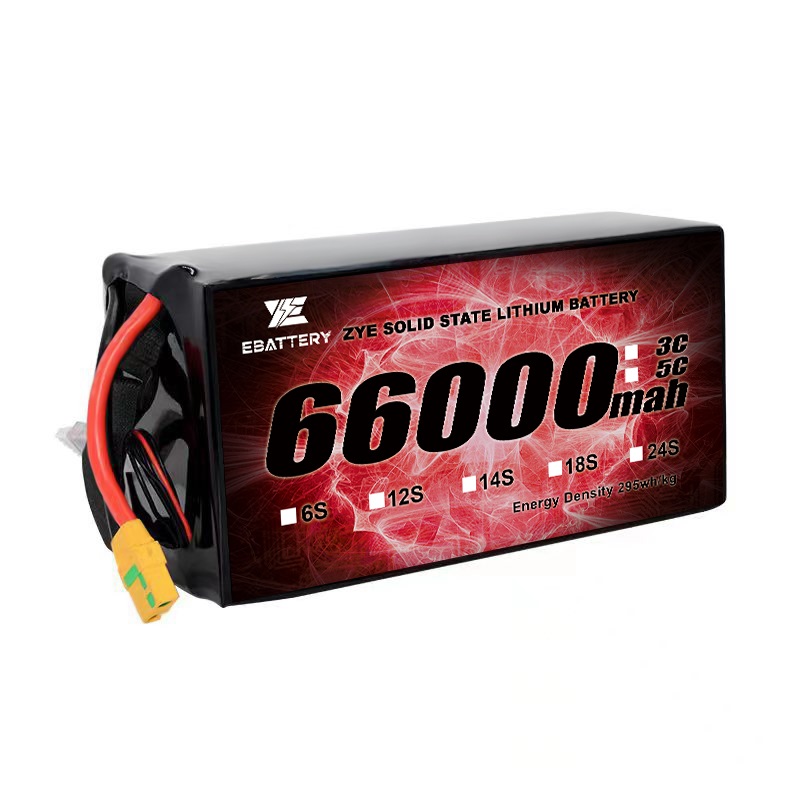What Are Proven Ways to Extend Your Drone LiPo Battery Life?
2025-11-21
Taking care of them isn’t just about saving money—it’s about avoiding mission failures and ensuring consistent performance. Here are the industry-insider tips that actually work:
Start with the basics: use the right battery. It sounds simple, but skipping the manufacturer’s recommended battery for a cheaper alternative is a recipe for disaster. Every drone is engineered to work with specific battery types and capacities, and using the wrong one can cause overheating, reduced flight time, or even permanent damage to the drone’s power system.
Storage is make-or-break for battery lifespan. Most operators don’t realize that storing a battery at full charge or near-empty can ruin its cells over time. The sweet spot is 50% charge—enough to keep the cells healthy without stressing them. Store your batteries in a cool, dry place (between 68°F and 77°F is ideal) away from direct sunlight or extreme temps. A hot car or a freezing garage will degrade the battery’s chemistry fast, so invest in a fire-resistant battery case to keep them safe during storage and transport—they’re cheap insurance against malfunctions.

Avoid overcharging and over-discharging at all costs. Use only the charger recommended by the manufacturer, and never leave a battery charging overnight. Most modern chargers have auto-shutoff, but it’s still smart to monitor them—overcharging causes overheating, which melts internal components and shortens lifespan. On the flip side, don’t let your battery drain completely during flights; landing when it hits 20% charge (instead of pushing to 0%) will prevent permanent cell damage.
Fly smarter, not harder. GPS-assisted stable flight modes are designed to be energy-efficient—use them instead of manual modes that require constant motor adjustments. Plan your flight path ahead of time to avoid unnecessary detours; a straight line uses way less power than zig-zagging or making frequent turns. Skip aggressive maneuvers like sudden acceleration or sharp turns—smooth, controlled movements keep the motors from working overtime. And limit hovering: it might seem low-effort, but keeping the drone stationary requires continuous motor power to fight gravity and wind—cutting hover time by just 5 minutes can add 10+ minutes to your total flight.
Keep your drone light and well-maintained. Extra accessories like unused mounts or decorative parts add weight, forcing the motors to work harder and drain the battery faster. Remove anything you don’t need for the mission. Regularly check propellers for cracks or wear—damaged propellers create drag, which stresses the motors and uses more power. And don’t skip firmware updates: manufacturers often release updates that optimize power management, so a quick update could add a few minutes of flight time overnight.

Accessories That Actually Boost Battery Performance
Some accessories aren’t just gimmicks—they can extend battery life and keep your operations running longer:
Propeller guards: Beyond protecting your drone from crashes, they improve aerodynamics by reducing turbulence around the propellers, which cuts motor strain and saves power.
Battery heaters: In cold weather, batteries lose capacity fast—heaters keep them at optimal temperature, ensuring consistent performance and preventing premature shutdowns.
Portable solar panels: For all-day outdoor missions, solar panels let you recharge spare batteries between flights, so you don’t have to pack up early.
High-capacity power banks: Keep one in your field kit to recharge batteries on the go—perfect for remote locations where power outlets are scarce.
Wrapping Up: Balance Today’s Performance with Tomorrow’s Innovation
Solid state batteries are set to revolutionize the drone industry, but they’re not here yet. In the meantime, taking care of your LiPo batteries is the best way to maximize your drone’s performance and avoid costly downtime. By following these tips—from proper storage to smart flying habits—you can extend battery lifespan by 50% or more, saving money and ensuring reliable missions every time.
Remember: safety always comes first. Never compromise on battery care to squeeze out a few extra minutes of flight—damaged LiPo batteries can catch fire or explode, putting people and property at risk. With consistent practice, you can balance endurance, performance, and safety, making the most of your current setup while waiting for the solid state future.
As solid state battery technology advances, we’ll keep you updated on the latest developments and how they’ll impact your operations. For now, start implementing these LiPo care tips—your drone will thank you very much.
Ready to dive deeper into solid state battery solutions for your drone operations? Reach out to our team to discuss custom strategies and how to prepare for the next era of drone power.
























































